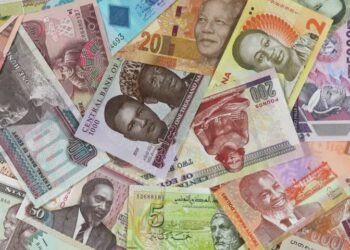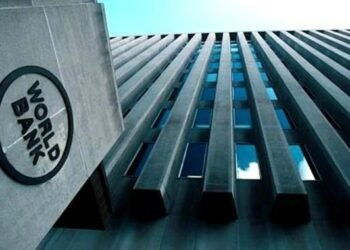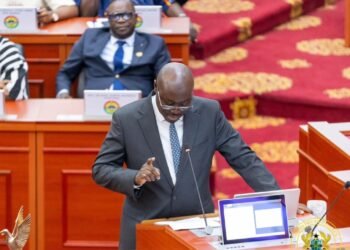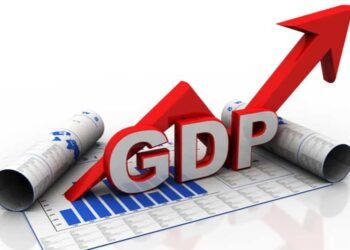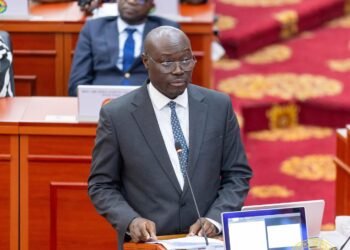Moody’s Investors Service (Moody’s) has projected that Ghana government’s debt ratios will continue to deteriorate in the next few years with extremely weak debt affordability significantly constraining policymaking.
According to Moody’s, government debt ended 2021 at 80% of GDP while interest payments alone consumed half of government’s revenue that year (positioning Ghana with the second largest ratio among Moody’s rated sovereigns).
The rating agency contended that given that Ghana is still a low average income at about $6000 per capita at Purchasing Power Parity and demands on social spending, very weak debt affordability constrains the government’s scope of policy action, intensifying the policy trade-off between servicing debt and delivering services to the Ghanaian population.
“Moody’s projects that the government will improve its primary balance by a cumulative 3% of GDP over 2022-24. The government’s own fiscal consolidation plan presented in November 2021 sets more ambitious targets, supported by new revenue measures worth 3% of GDP, some of which have since been opposed in Parliament.
“The government has announced a 20% cut in primary spending, equivalent to a 4% cut on a year-on-year basis or 16% in real terms, to compensate for any shortcoming in the government’s revenue measures package. Such an unprecedented fiscal tightening will be socially, economically, and politically challenging to implement”.
Moody’s
Moreover, Moody’s factors in further fiscal pressure from interest payments in the short term as the deterioration in funding conditions recently observed is unlikely to reverse until the government demonstrates to investors that significant fiscal consolidation is underway.
Both domestic and external factors underpin Moody’s assumption that debt costs will remain high, including high inflation (at 12.6% most recently) and Moody’s expectation of tighter monetary policy globally. Ghana’s borrowing needs remaining elevated, at around 30% of GDP annually, mean higher borrowing rates will quickly translate into higher interest costs.
Ultimately, Moody’s expects that a higher interest bill in 2022 and 2023 will offset the improvement in the government’s primary balance, thereby maintaining double-digit fiscal deficits (in cash terms) with a concomitant increase in the government’s debt burden.
Weaker Government Liquidity Position
Moody’s emphasized that the government of Ghana’s capacity to access sufficient funding sources at manageable costs to meet large funding needs has deteriorated.
“The government’s external funding options have narrowed and, for the time being, appear limited to official sector sources or financing secured with the support of the official sector. This implies a greater reliance on domestic borrowing, primarily sourced from the banking sector at a cost that has recently increased to high levels”.
Moody’s
Ghana’s fiscal reserves, including in the various petroleum funds, remain very small and therefore not suited to provide funding in times of stress, Moody’s warned. According to Moody’s, Ghana’s constraints on external funding come at a time when external debt service requirements in foreign currency are contained, thereby limiting short-term government liquidity risks.
“Foreign exchange reserves at $9.3 billion as of October 2021 according to the IMF (equivalent to 8 months of imports) provide a buffer to meet external debt flows. However, over the medium term, the government’s external liquidity profile will likely erode unless Ghana is able to restore its access to a wider range of external borrowing sources, including international markets. This, in turn, will rely on the ability of the government to demonstrate a track record of delivering on its fiscal consolidation objectives”.
Moody’s
Environmental, Social, Governance Considerations
Moody’s further highlighted that Ghana’s ESG Credit Impact Score is highly negative (CIS-4), reflecting its high exposure to social risks.
“Resilience to environmental and social risks is weak, constrained by low wealth and high debt levels. Ghana’s credit profile is moderately exposed to environmental risks (E-3 issuer profile score). The cocoa sector is a large contributor to GDP, exports and employment and being demanding in water, it exposes the country to climate changes and especially droughts”.
Moody’s
According to Moody’s, Ghana is exposed to water management risks stemming from a lack of access to potable water in some areas. The rating agency further averred that the weight of the agricultural sector exposes the economy to weather-related disruptions and the effects of climate change.
The exposure to social risk is high (S-4 issuer profile score), driven by limited access to quality housing and education, especially in rural areas. Risks related to health and safety and access to basic services are moderately negative.
“While the government has put in place measures aimed at reducing poverty and inequality and strengthening social safety nets, its fiscal challenges constrain its scope for meaningful reduction in social risks given more than half of government revenue is consumed by interest payments”.
Moody’s
The current ratings show that Governance is highly negative with a G-4 issuer profile score but overall, Moody’s stated that Ghana’s institutions have shown some effectiveness.
Moody’s has lowered the governance issuer profile score to reflect domestic revenue mobilization challenges and significant constraints on fiscal policy effectiveness reflected by very weak debt affordability.
The rating agency stated that government’s institutional reforms on the revenue and competitiveness front, “will take some time to produce results”. All these factors resulted in the downgrade of Government of Ghana’s long-term issuer and senior unsecured debt ratings to Caa1 from B3 by Moody’s.
READ ALSO: UG Closes Swimming Pool Until Further Notice Following Death of A L100 Student





